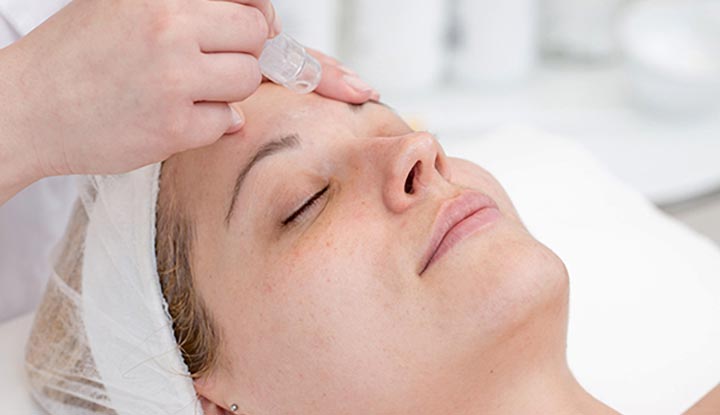Microdermabrasion is a popular non-invasive skin resurfacing treatment that has gained significant popularity in recent years. It’s a procedure that exfoliates the top layer of skin, revealing smoother, younger-looking skin beneath. If you’re considering microdermabrasion or simply curious about what it entails, this guide will provide you with valuable information.

How Does Microdermabrasion Work?
During a microdermabrasion treatment, a special device is used to gently exfoliate the skin. Tiny crystals or a diamond-tipped wand are passed over the skin, removing dead cells and other impurities. This process helps to improve skin texture, reduce fine lines and wrinkles, and even out skin tone.
Benefits of Microdermabrasion
- Improved Skin Texture:Microdermabrasion can significantly improve skin texture by removing rough, dry patches and revealing smoother, healthier skin.
- Reduced Fine Lines and Wrinkles: The exfoliation process can help to reduce the appearance of fine lines and wrinkles, making your skin look younger and more radiant.
- Enhanced Skin Tone: Microdermabrasion can help to even out skin tone by reducing the appearance of hyperpigmentation and dark spots.
- Improved Acne Scarring: The treatment can be effective in reducing the appearance of acne scars by stimulating collagen production and promoting skin renewal.
- Increased Product Absorption: Exfoliating the skin can help to improve the absorption of skincare products, making them more effective.
What to Expect from a Microdermabrasion Treatment
A typical microdermabrasion session lasts between 30 and 60 minutes. The procedure is generally painless, although some patients may experience mild discomfort or a tingling sensation. After the treatment, your skin may appear slightly flushed or pink, but this should subside within a few hours.
Is Microdermabrasion Right for You?
Microdermabrasion is suitable for most skin types and can be used to address various skin concerns. However, it may not be appropriate for individuals with certain skin conditions, such as severe acne or rosacea. It’s essential to consult with a qualified skincare professional to determine if microdermabrasion is right for you.
How Often Should You Get Microdermabrasion?
The frequency of microdermabrasion treatments depends on your individual skin goals and concerns. Many people opt for a series of treatments followed by maintenance sessions. Your skincare professional can provide personalized recommendations based on your needs.
Conclusion
Microdermabrasion offers a safe and effective way to improve the appearance of your skin. By removing dead skin cells and stimulating collagen production, this treatment can help to reduce fine lines, wrinkles, and other skin imperfections. If you’re seeking a non-invasive way to enhance your skin’s health and vitality, microdermabrasion may be an excellent option.
Relevant Links:
- American Academy of Dermatology: https://www.aad.org/
- Healthline: https://www.healthline.com/health/microdermabrasion
- WebMD: https://www.webmd.com/beauty/video/basics-microdermabrasion



